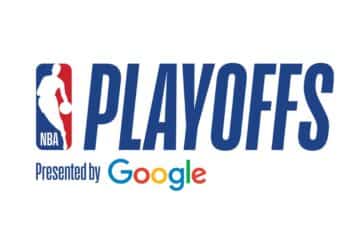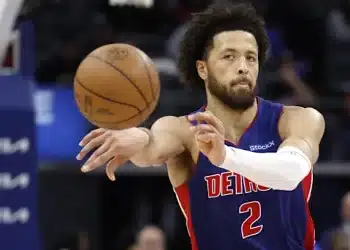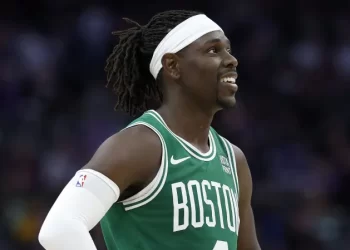By: Zachary Draves
Reggie Lewis. His heart was as big as his broadening smile. His heart was so big in warmth that it became arguably his most defining quality outside of his majestic play on the hardwood.
He was the Kevin Durant of his time. Not just that they wore the same #35 and were first round picks, but they possessed both the physicality and versatility that redefined the role of the power forward. In fact, a case can be made that it was Reggie who paved the way for KD.
His touch was felt everywhere he went and his loss thirty years ago still registers feelings of deep sadness, pain, and shock. It was ultimately his big heart that succumbed to him at the tender age of 27, but in that short life span it gave so much.

(Courtesy: John Blanding/Boston Globe)
When it came to basketball, Reggie was a maestro. From his early years in Baltimore playing for Dunbar High School alongside Tyrone “Mugsy” Bogues and Reggie Williams in what many consider to be the greatest high school basketball team ever assembled, he got a taste of greatness before most. Even though he didn’t start, it was just a matter of time.

(Courtesy: Basketball Insiders)
Reggie’s breakthrough came while playing under Coach Jim Calhoun at Northeastern University in Boston. During his four years, he became the greatest Huskie in history. Not only did he lead the Huskies to four consecutive North Atlantic Conference titles and a couple NCAA tournament appearances, he averaged a career total 23.3 PPG and became the all-time leading scorer in New England collegiate history with 2,709 points.
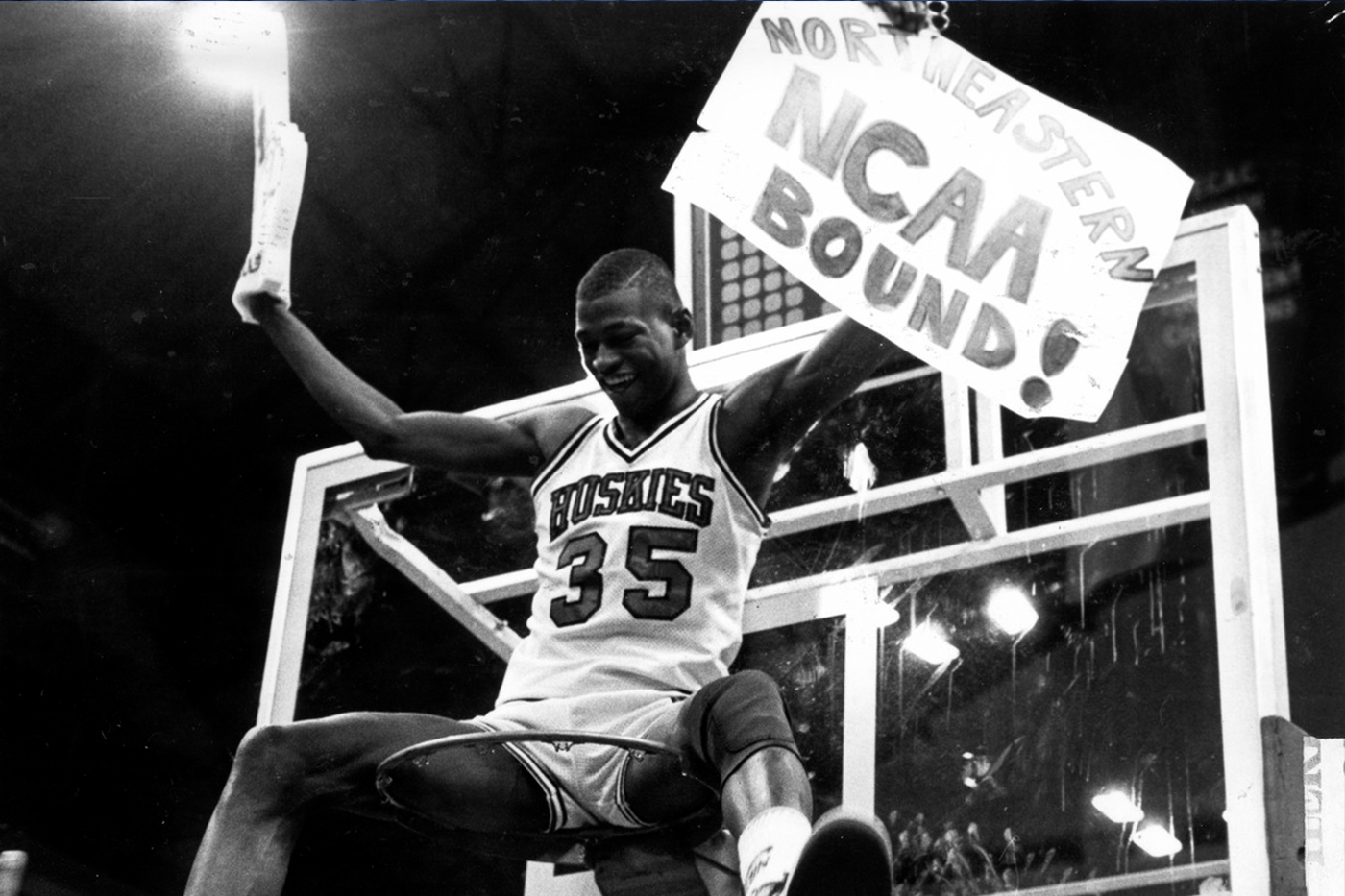
(Courtesy: Northeastern University)
Next up, the Boston Celtics. Reggie was the 22nd pick in the first round of the 1987 draft for one of the most storied franchises in all of sports. A franchise that was in mourning over the untimely passing of their first round pick from the previous year, Maryland All-American Len Bias.
That was the tipping point for a team that was on the cusp of a rapid decline from glory days of the early 1980’s when Larry Bird, Robert Parish, and Kevin McHale won three NBA titles and spurred a basketball renaissance with Magic Johnson’s Lakers.
In 1987, the Celtics lost the Finals in six games to the Lakers and they were never the same after that. Injuries began taking a profound toll on Bird and much of the core players began to scatter elsewhere.

(Courtesy: NESN.com)
There was a need for a new generation to take the mantle of Celtic pride and from the get go, Reggie saw that need and tried to provide it.
He originally started from the bench but eventually worked his way to a starting role. He had gone from playing 8.5 minutes a game to 30 minutes and averaging 18.5 PPG. Reggie was such an outstanding leader that when Bird retired, he took over the role of captain.
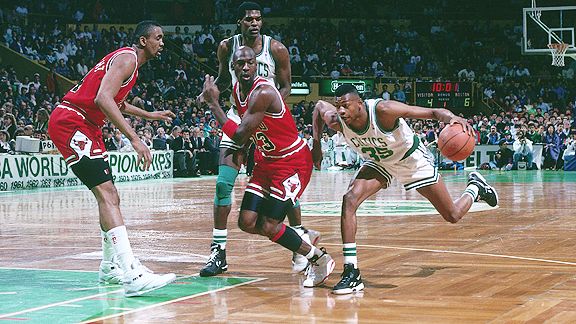
(Courtesy: Dick Raphael/NBAE/Getty Images)
That year, he played in the All-Star game in Orlando scoring 7 points and grabbing 4 rebounds.
It was also that year that he saw a need and tried to provide it off the court.
In the aftermath of the LA Riots/Rebellion after the acquittal of four white LAPD police officers in the beating of Rodney King, feelings of discontent, dismay, and despair were limited to South Central Los Angeles.
That was nationwide including in Boston, which has its own history with racism dating back to the Boston Red Sox being the last team in baseball to integrate, the treatment of Bill Russell and other black Celtic players during the dynasty run of the 1960s, and certainly the busing crisis of the 1970s.
In the midst of the upheaval from what had occurred in Los Angeles, Reggie took it upon himself to find areas where he could bring all people together to root out racism. He wasn’t in the tradition of protest as Russell, Muhammad Ali, or Arthur Ashe, but focused instead on the individual and community level using the power of dialogue.
With the help of Celtics assistant coach Jon Jennings, a white man from rural Indiana, they forged a plan to create what would later become Team Harmony, an initiative that seeks to root out racism and bigotry through the creation of anti-hate programs in schools.
Famed sports scholar and activist Dr. Richard Lapchick, who was then the director of the Northeastern University Center for Sport in Society, had a few interactions with Reggie after conducting similar workshops with the Celtics, but immediately took a liking to him and was impressed with his actions.
“He had positive energy,” he said. “He was looking for constructive ways in being people together.”
Those tangibles translated on the court as Reggie was able to lead the Celtics to the 1993 NBA Playoffs, the first for them without Bird.
Then on April 29, 1993, he collapsed on the court during Game 1 of their playoff series against the Charlotte Hornets. Feeling dizzy and out of breath, he left the game having scored 17 points in 13 minutes of play.
Reggie was originally diagnosed with focal cardiomyopathy, a disease that weakens the heart muscle and increases the risk of heart failure. After being told that his condition was career ending, he consulted with Dr. Gilbert Mudge at Brigham and Women’s Hospital, who diagnosed him with the non-fatal condition neurocardiogenic syncope and cleared him to play.
Then on July 27, 1993, he collapsed on the court during an off-season workout at Brandeis University. He then went into cardiac arrest and two campus officers found him unconscious and tried to resuscitate him, but it was too late.
The cause of death was hypertrophic cardiomyopathy, the heart condition that is common in young athletes and took the life of Hank Gathers three years prior.
Immediately after his death, Bostonians were in a state of mourning. It had been five years since Len Bias died and now they had to deal with a similar untimely passing of the man that was looked at as the future for the Celtics.
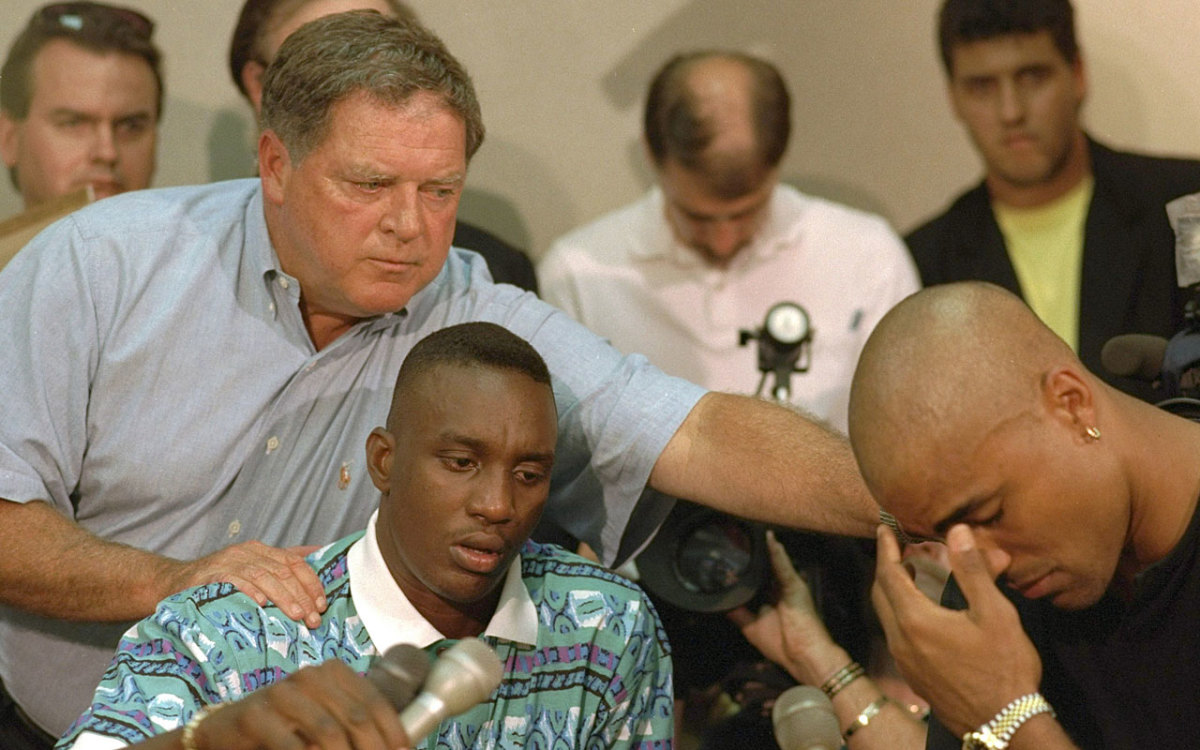
(Courtesy: Sports Illustrated)
Thousands turned out for his memorial and among them was Dr. Lapchick, who was able to take in the magnitude of the moment.
“It was both love and sadness,” he said. “ I remember being struck by the biggest outpouring of love I’d ever seen.”
In the years since his passing, Reggie Lewis continues to be a bright light in Boston and beyond.
On December 13, 1994, all four professional sports teams in Boston (Celtics, Bruins, Red Sox, and Patriots) took part in the first ever major event for Team Harmony in which 6,000 middle and high school students and teachers from 300 schools participated in a collective stand against hate and bigotry.
Jon Jennings forged ahead with the organization in honor of Reggie.
The Reggie Lewis Track and Athletic Center opened at Roxbury Community College in 1995. It hosts various local athletic events including Northeastern University indoor track meets. That same year, the Celtics retired the #35.

(Courtesy: Rocky Widner/NBAE/Getty Images)
Thirty years later, some ask with sincerity what could have been? It’s a question that we can only ponder and come up with our own answers, but what is certain is that the legacy of Reggie Lewis is that of a man of high character who led by example both on and off the court.
“He’s got a legacy of great affection that lasts 30 years later, ” said Dr. Lapchick. “He was a community builder.”
The pain of his passing remains and the joy he brought endures.


 NFL
NFL
